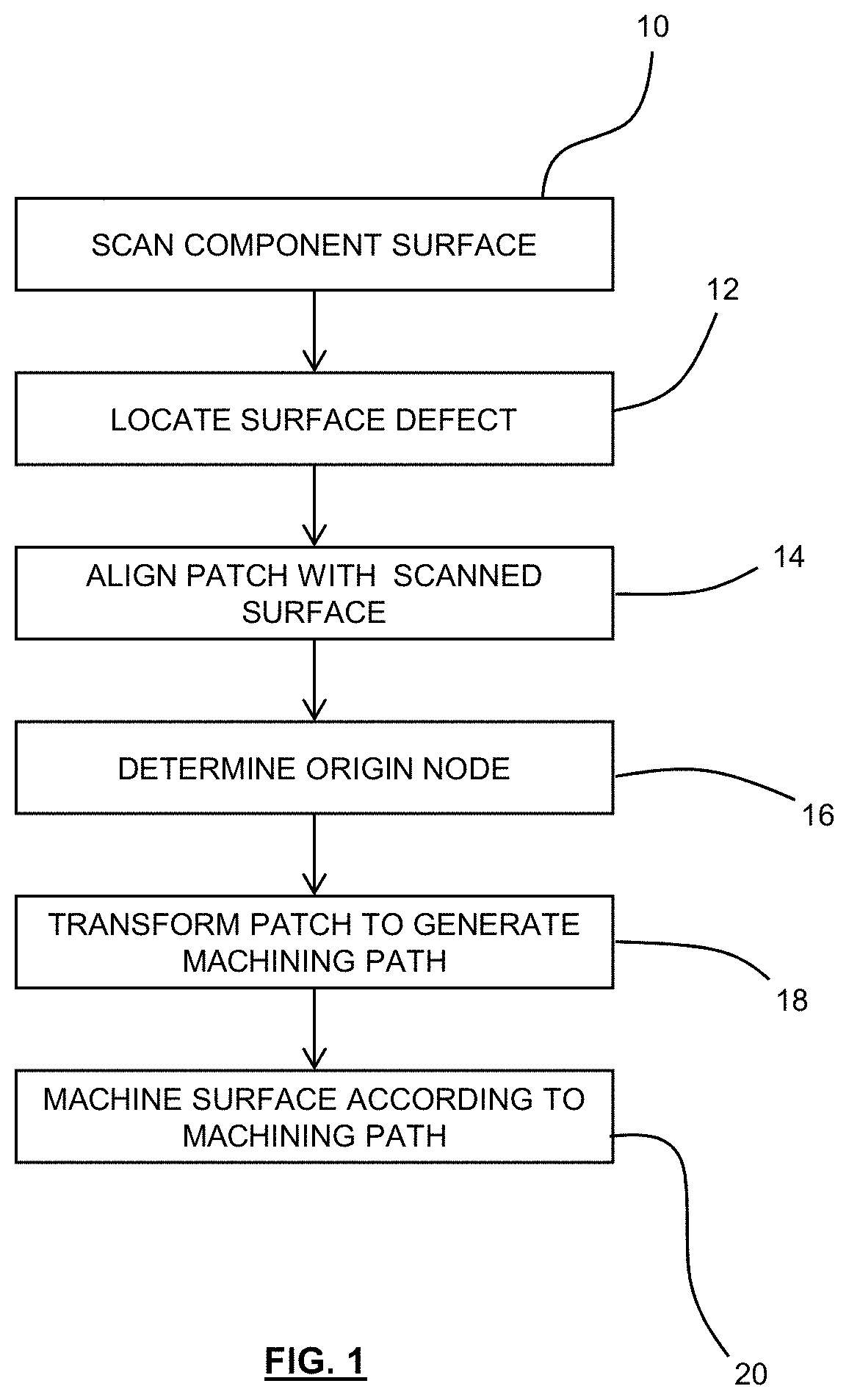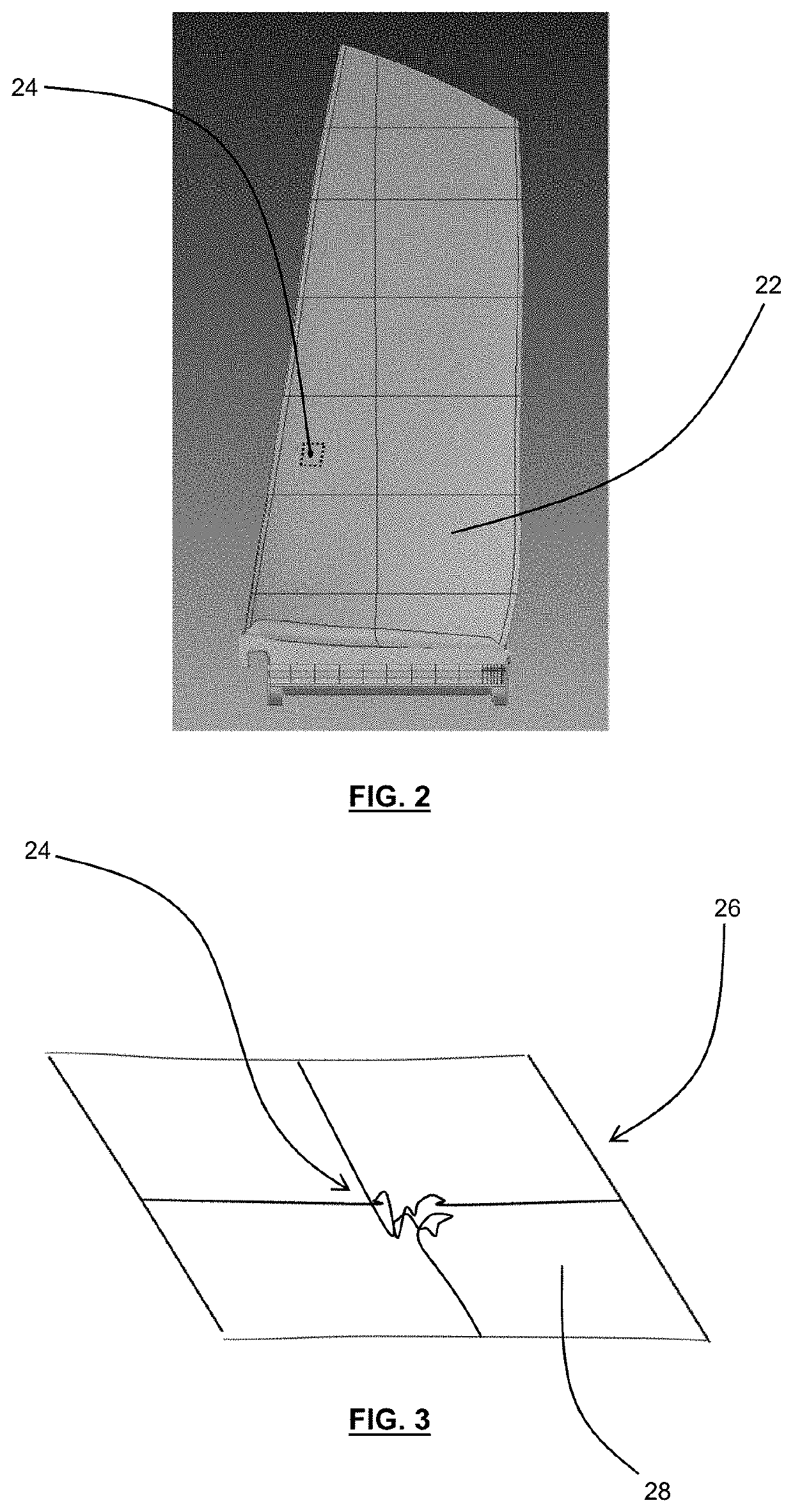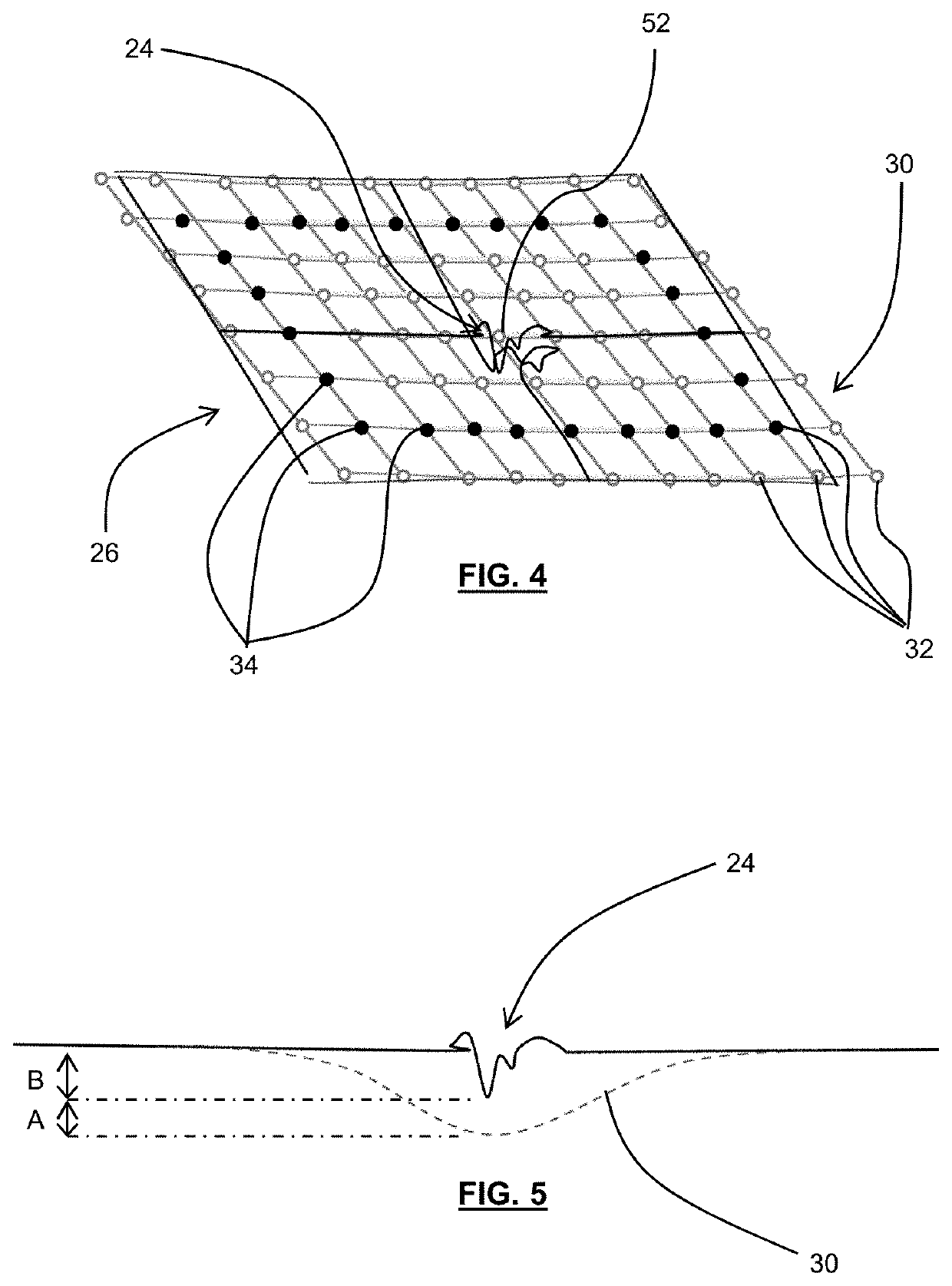Method of machining a component
a technology of machining and components, applied in the direction of computer control, program control, instruments, etc., can solve the problems of inconsistency between repairs, process manual drive and susceptible to variation, and component wear,
- Summary
- Abstract
- Description
- Claims
- Application Information
AI Technical Summary
Benefits of technology
Problems solved by technology
Method used
Image
Examples
Embodiment Construction
[0048]Aspects and embodiments of the present disclosure will now be discussed with reference to the accompanying figures. Further aspects and embodiments will be apparent to those skilled in the art.
FIG. 1 provides an overview of a method for repairing a surface of a component having a surface defect.
[0049]The method comprises, at step 10, scanning the surface to obtain scanned electronic 3D data representing the scanned surface of the component (e.g. a CAD file representing the surface). In some cases, the surface may be scanned as part of a scan of the entire component. Any suitable scanning method may be used, including e.g. laser scanning and CT scanning.
[0050]At step 12, a surface defect is located on the scanned surface. This may be performed by inspecting the scanned surface (i.e. the 3D data representing the scanned surface) for the surface defect. The inspection may comprise identifying regions on the scanned surface that have a curvature above a threshold curvature (which ...
PUM
| Property | Measurement | Unit |
|---|---|---|
| Size | aaaaa | aaaaa |
| Area | aaaaa | aaaaa |
| Distance | aaaaa | aaaaa |
Abstract
Description
Claims
Application Information
 Login to View More
Login to View More - R&D
- Intellectual Property
- Life Sciences
- Materials
- Tech Scout
- Unparalleled Data Quality
- Higher Quality Content
- 60% Fewer Hallucinations
Browse by: Latest US Patents, China's latest patents, Technical Efficacy Thesaurus, Application Domain, Technology Topic, Popular Technical Reports.
© 2025 PatSnap. All rights reserved.Legal|Privacy policy|Modern Slavery Act Transparency Statement|Sitemap|About US| Contact US: help@patsnap.com



